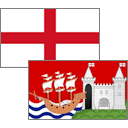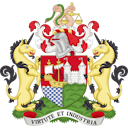Buckle up boys and girls, this could be quite a quest what with Bristol being England's eighth biggest city, although Bob's sure it was sixth when he was a kid.
It would be quite a quest if not done as a day trip from Bath and without even the most basic form of homework beforehand. That makes for more of a bumble around Britain's sixth biggest city, at least it was when I was a kid long before primary urban areas and unitary authorities became a thing.
Bristol Temple Meads, the most exotically named of all the train stations from an olde-worlde way of saying a church and some pasture.

The temple and meadow in question were beyond the old city limits and it looks like the station might nearly still be. Yes, you need another train to get to the centre, not really, and it's a taxi driver's dream as they idly rub their hands at the arrivals board outside of Isambard Kingdom Brunel's 1840 terminus.
As Chief Engineer at the Great Western Railway company, Isambard's day job was bridges and tracks although he had a sideline in designing stations and also did the one at the other end.
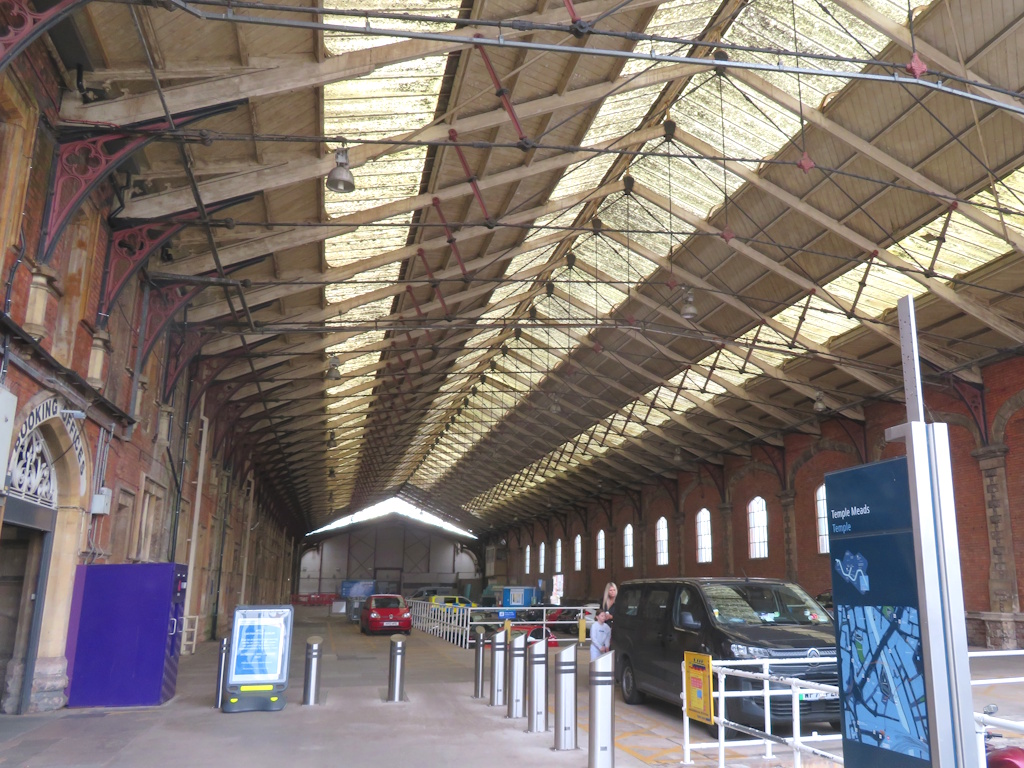
His engine shed still stands and Temple Meads links to London along Brunel's original route. That's London Paddington, by the way, and while Temple Meads certainly sounds the part, it's a rubbish name for a bear.
Following the crowds and heading east, a busy road prevents a closer nod at the impressive St. Mary Redcliffe Church, not shown, which could qualify as a cathedral but doesn't but more on that in a minute.
Besides, there's a 'bascule' bridge to cross towards what's hoped to be the centre, although no need today to wait for any heavy lifting. Just enjoy the River Avon below, that is the River Avon, isn't it?

Well, sort of, and it was the River Avon but its tidal nature prevented Bristol from being a particularly productive port half of the time.
No problem, dig a near-two-mile channel slightly south to divert the original course and block this bit off to create Bristol's 'Floating Harbour', as it's commonly called. The 'New Cut' was cut in the early 1800s and makes for a complicated setup waterway-wise with disoriented types wondering how the heck they'll ever get back to Temple Meads.
Queen Square can accidentally be found over the bridge and the queen in question was Queen Anne when she visited Bristol in 1702.

The penniless city council at the time developed on what was once marshland and sold plots to wealthy merchants whose fortunes were amassed mainly by nefarious, seafaring methods.
Good for the coffers but not so good for the cholera, the area surrounded by a sometimes stagnant Avon. Many of those with the means started to move up the hill to an up-and-coming Clifton before Queen Square was nearly destroyed during the war.
Yes, a class war, of sorts, or the 1831 Bristol Riots if you'd rather, part of the general unrest around the country that led to the eventual Great Reform Act of 1832.
'Rotten boroughs' provided disproportionate parliamentary representation based on small numbers of constituents, and increasingly populous industrial centres, as was Bristol, warranted a fairer share of MPs.
Disaffected toffs disapproved of the proposal, unlike the working classes despite most of them not being able to vote, yet. Judge Charles Wetherall, a rotten borough beneficiary, misjudged the mood on a presiding trip and an unruly mob, they say, had their say.
Fuelled by free, French fizz from basement cellars, Bristol burned for three days and nights. Half of the former properties facing Queen Square went from three storeys to none leading to the hanging of four of the ringleaders and others deported to Oz.
No longer worthy of conservation status, a new train station, Bristol Central, was proposed on the derelict site. That didn't happen although a major road was laid corner to corner, which remained a busy bus route into the early '90s. Not until then was this relaxing space restored to its pre-1831 state thanks to National Lottery™ funding.
Saying that, a new station wasn't such a bad idea, Temple Meads seems miles away having just read that all back, phew!
Fans of the show-off will be delighted to find Bristol's Old Vic theatre just north of Queen Square.

Technically, taxis from Temple Meads should be directed to the Theatre Royal, as the Old Vic is the theatre company and not nearly so old. Not that the drivers are bothered, they'll take you the long way round anyways, probably.
King Street is the first feel for some fleshpots, hipster ones, and the Llandoger Trow pub is the standout.

Parts of it are older than Queen Anne and it's named after Llandogo, a Welsh village accessible by trow, a flat-bottomed boat, across the Bristol Channel.
That's not a recommended route home, by the way, the best bet is the Premier Inn™ and the swathes of outdoor seating guarantee a refund on a promise of a good night's sleep.
King Street leads to Welsh Back, a busy back-in-the-day wharf from where ships used to head back to, well, Wales, when the tide wasn't out.

The commemorative plaques on the seating are to merchant seamen lost during World War II, several unknown. Many were no more than boys and for them this would have been their last bit of dry land.
Nothing dry about it, these days, the collective, nautical sacrifice is respectfully remembered as an embarkation point for boozy cruisers.
Many of the old buildings hint at mercantile HQs including the former fish market where the cod now comes with chips, a pint and big-screen TVs.


Wares on a smaller scale are on offer up All Saints Lane and who doesn't enjoy a mooch around a covered, Georgian market?
St. Nicholas Market, however, has been temporarily hijacked by St. Patrick for tomorrow's day to forget. The Irish Rover is already getting a rendition and the bouncers are rigidly enforcing the one-way system through the narrow aisles.
While we're here, though, how about some slow-cooked lamb stew and a dollop of perfectly seasoned colcannon, yum yum? No such luck, is the noodle really so key to Killarney's culture?
What's that busker going to bang out next? A couple of choruses of We Are the World?
It's eye-catching stuff architecturally including the usual random repurposing for retail and recreation.


This on the way to 'The Centre', an area that's not really the centre of anything and the location of an inevitable mention. Many old merchants were invested with parties involved in the slave trade but as deputy governor of the Royal African Company, Edward Colston's links could be seen as less transparent.
Objections to his celebratory statue had been declared over the decades until, in June 2020, he ended up in the harbour. It's a well-reported event although not so well known, perhaps, is that he was rolled for more than 200 metres from a now-empty plinth to be dropped in the drink.
Bristolians take great pride in an independent, multicultural and creative identity, as those of you who enjoy hopping while tripping will testify. The incident, however, remains unique to the city despite hundreds of other brassy candidates around the country.
If this were to be repeated elsewhere, regular readers, yeah right, know SlyBob would need a week to delete any offending pics.
The spot where Colston went sploosh is, well, more than 200 metres farther down at the start of what were Bristol's main docks. It's now the kind of generic, glassy gentrification that, sorry Bristol, could just about be anywhere.

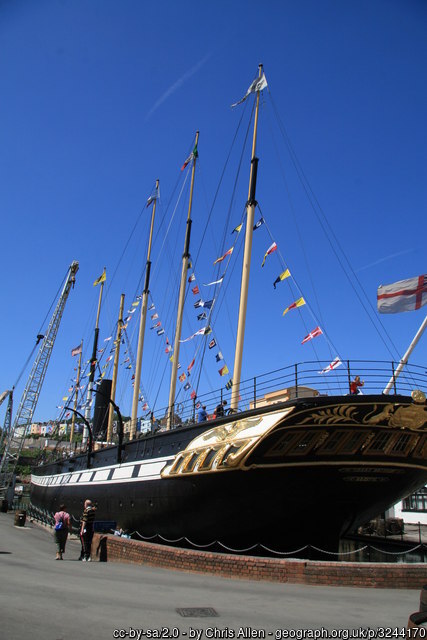
The Floating Harbour has a hop-on, hop-off ferry to get you over to Isambard Kingdom Brunel's SS Great Britain - thanks Chris , Bristol's 'number one attraction', they say.
Yes, when Brunel wasn't realising railway stations or bridges or tunnels, he was designing the largest passenger steamship in the world for those changing trains to the United States.
The pastel-painted terraces up the hill in the distance are typically Bristol and they're on the way to Kingdom's famous suspension at Clifton, not actually completed until after his death.

None of us, however, is here to applaud Isambard's industrial legacy. No, the quayside claims, get this, 'The biggest restaurant in the UK', no less.
Za Za Bazaar™ boasts a colossal 1,000 covers and diners pile plates high from an all-you-can-eat 'World Buffet', which means Far East, Tex Mex, European and Indian by the looks of it.
Gastronomes, hello, are baulking at the prospect but a crispy wonton, a Buffalo wing, a hot dog and a poppadom on the same saucer? What's not to like there, yum yum, again.
If it isn't, and it's not, their slogan should be 'Za Za Bazaar™ - Where the quality of our food is measured in continents.'
Waddling away from the water full of curried-sushi pizza, or whatever, it's past a play park to the back of Bristol Cathedral.

It's no St. Mary Redcliffe, for sure, but big enough to warrant an approving nod with no particular interest in the insides.
As gatehouses go, the original Abbey's Great Gatehouse undoubtedly is, and it's through to an eye-catching construction, a curving structure overseeing College Green.


Bristol's seafaring tradition suggests this is a naval academy. It looks like one, although we've never actually seen something similar close up, the moat might be a clue?
Not so, the purpose is more municipal and City Hall is where pen-pushers approve the planning applications for waterside redevelopments, all in the name of progress, probably.
Bristol is famously hilly, but everything has been firmly on the flat, so far. Here, however, is one road that looks like it needs a right good walking up.

Park Street isn't quite the 22% gradient you'll find on Vale Street, in the appropriately named district of Totterdown, although it doesn't feel much off, about 6% off, actually.
The reward for the lug up is some top-notch, turn-of-the-20th-century bricklaying in the forms of the free Bristol Museum & Art Gallery, not shown, and the Wills Memorial Tower, shown.

The tower marks the start of Bristol University's campus, and there's certainly a youthful throb. Not that the students at one of the UK's posher educational establishments are representative of the city's reputation for no nonsenseness.
Apart from the independent vendors on the lug up Park Street, evidence of any free spiritedness appears to be in the past, so what about Banksy?
Yes, we've managed to get this far without a single mention of the Bristol-born street artist or vandal, depending on your perspective. Plenty of maps elsewhere are available to pinpoint his pieces, but what of the surroundings that spawned the secretive spray painter?
There's something of it along Park Row, which you'll find dawbed on a wall near the Theatre Collection building.


Not, as first thought, a venue for aspiring Legz Akimbos, rather a museum dedicated to the history of British theatre.
The university-run establishment is more of an academic archive and was established in the '50s when drama studies was deemed a suitable subject on the syllabus.
The teaching department is credited with a number of notable alumni, although big, booming Brian Blessed clearly skipped the mime classes, eh?
The inevitable descent is being delayed to enjoy the view over Bristol and to get our bearings. Bearings, it's hoped, to locate one of the few facts known of Bristol in advance - the 'Bear Pit'.

The sunken centre of a major roundabout accessible by underpass, named from the shape and not a form of underground Victorian entertainment. Baiting is available, though, through stalls of all things artisan and having not really filled up at Za Za Bazaar™, SlyBob couldn't half go a California roll and a tray of loaded fries, yum, yum.
There's a slight issue with that plan, however, the Bear Pit no longer exists! Not the major roundabout, that's still there, but anti-social types caused the council to close the adapted space below following one too many calls to the cops.
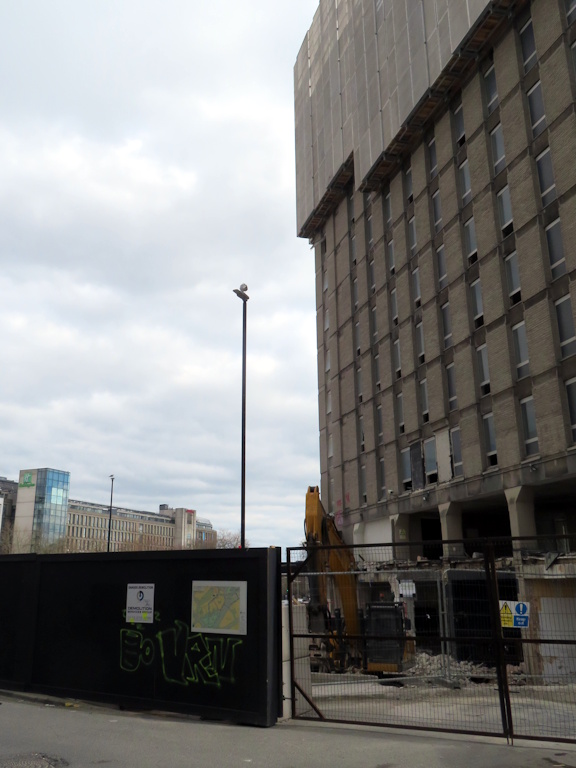
This happened back in 2019, not that it was known today. Demolition of an ugly office block meant a diversion via a bus station, anyways, making for one wild goose chase, where the goose was a bear.
The bus station delivers you down to Horsefair and what's presumed to be the city centre proper. It's presumed because this is where the big shops are including the now-defunct Debenham™s department store, RIP - thanks Gerald .
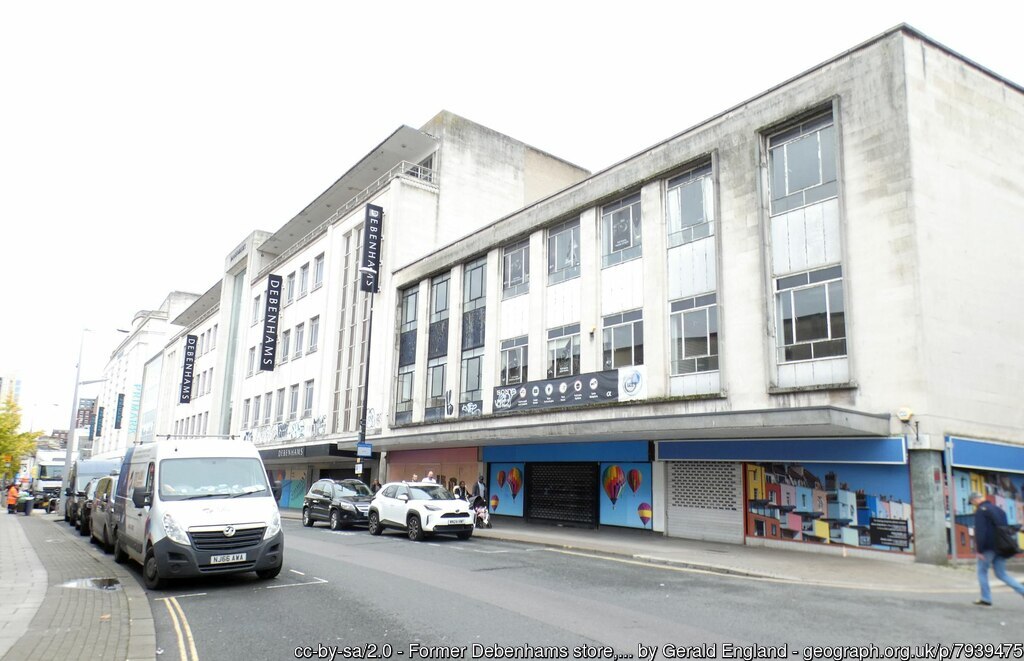
Not for much longer, though, the attractive-enough building is itself due to be demolished and replaced with a 28-storey tower block. The pen-pushers back at City Hall approved the plan, promising improved and safer access from the Bear Pit to Horsefair.
Best of luck with that, given the reported horseplay in the past, eh?
Another high-profile casualty of the high street looks to be M&S™ but this won't be no skyscraper soon. No, colourfully repurposed as Sparks Bristol, here is a one-stop shop for everything artsy.
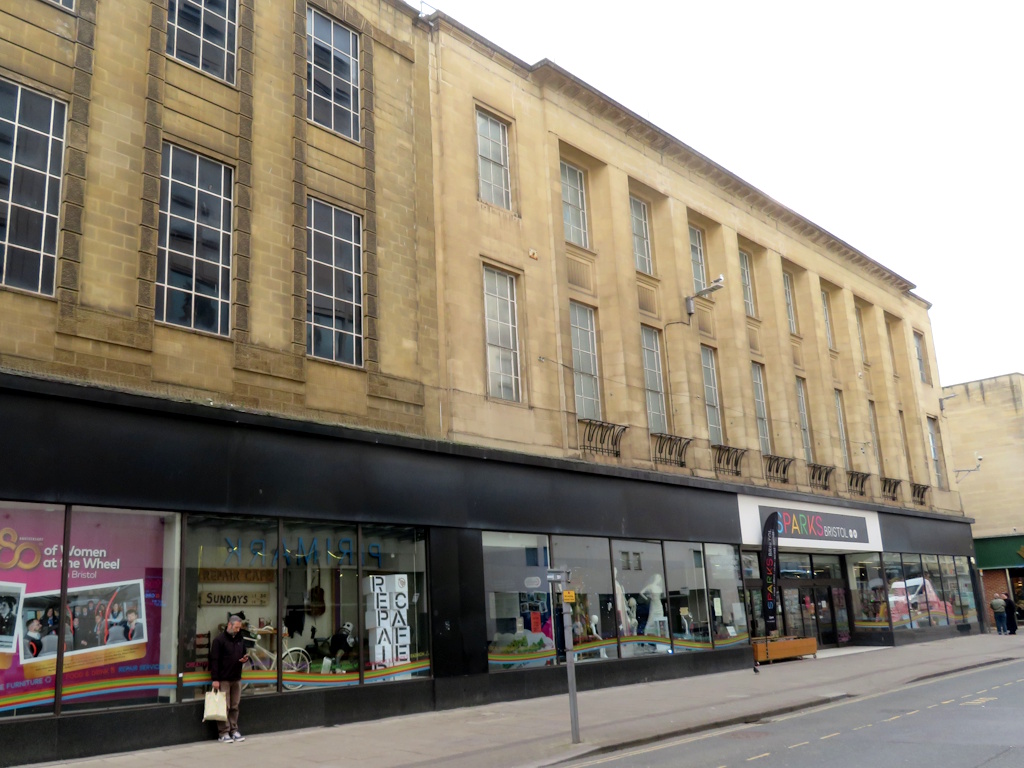
The shelves aren't suspected to be low on aerosols, there's been relatively little of the anticipated outdoor artwork. Perhaps they're practising upstairs where the former menswear section is a dedicated artistic hub with studio spaces for aspiring Banksys.
Lovely stuff, for sure, and it was made real when M&S™ relocated to Cabot Circus, one more generic shopping development, not shown, that, sorry Bristol, again, could just about be anywhere.
Christopher Columbus is credited with discovering America, although Chris largely holidayed in the Caribbean. John Cabot, or Giovanni Caboto as he's known back home, is often overlooked as the first man to set sail to North America.
Not here Cabot isn't, Bristol was the starting point and his remarkable achievement is celebrated with a shopping centre with a KFC™ and a Five Guys™ inside.
It's not thought, however, that Nando™s is a nod to the first bloke to round the tip of South Africa.
Religious revivalist John Wesley also liked to be out and about around the country. Following one feverish, open-air sermon, his newfound fanbase, we wish, were provided with a chapel, which you can get at up an alley when the gates aren't closed on Sundays.
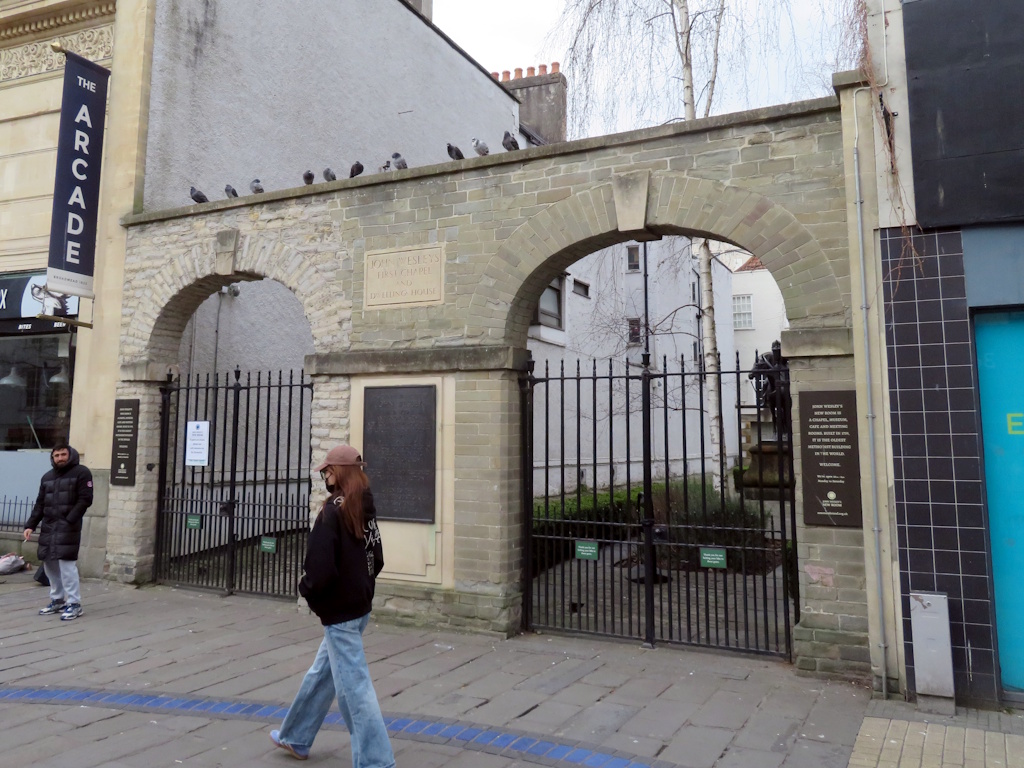
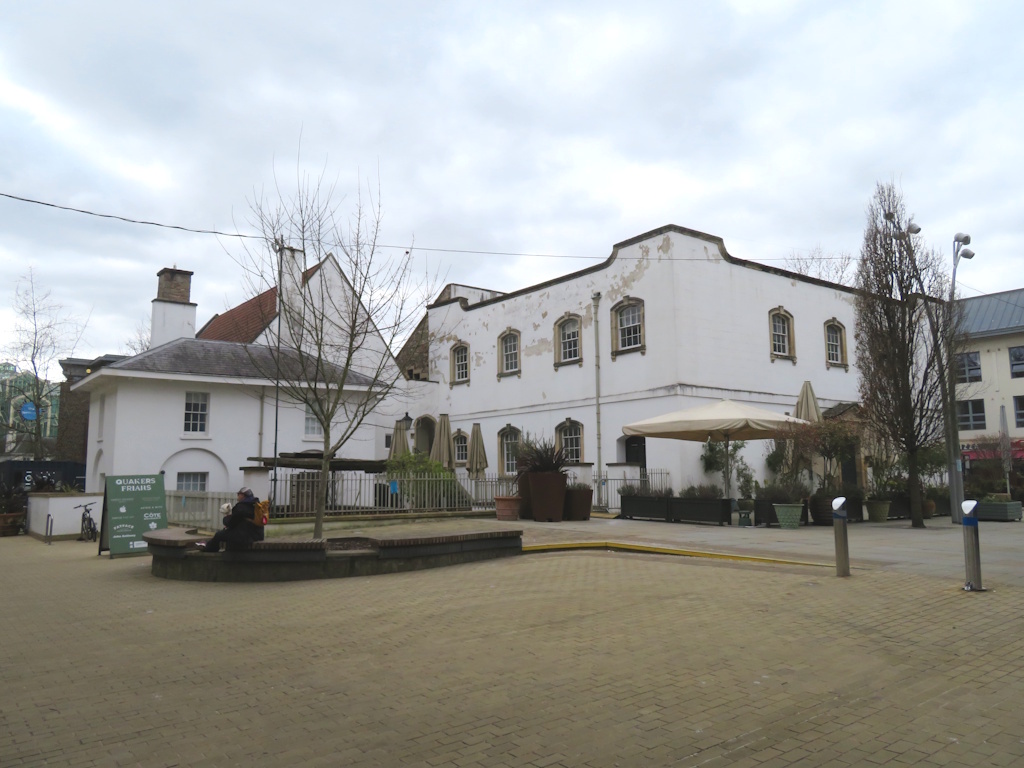
Quakers too were accommodated in a meeting house, built alongside what was left of a 13th-century Dominican Priory.
The area would have been a hotbed of the devoutly different back in 1750 and Wesley's New Room is the oldest Methodist building in the world, which, let's face it, just means England, really.
These points of interest, perhaps, are mentioned for no other reason than neither can be demolished, and both are found assimilated by the surrounding shopping. No, we wouldn't want you thinking SlyBob have gone all preachy.
An inexplicably overlooked piece of public greenery, a short stroll down from the Quakers. A strategic location on the looping River Avon, this is believed to be the site of Bristol's original Saxon settlement.
Willie Conker, no less, thought it suitable for a castle until Oliver Cromwell started the city-wide trend for demolition. A couple of centuries of construction followed before all being destroyed in the Blitz leaving the space that can be enjoyed today, if only you knew?
Traditionalists might crave the same fate for Cabot Circus, right codgers?
Phew! That was quite a trawl of England's eighth biggest city without even visiting the fringes, now known to be home to the more bohemian vibe.
With the light beginning to dim, there's a footbridge from Castle Park towards Temple Meads, but why bother when you can lose your bearings round the rear of Cabot Circus to follow road signs for the station along a busy dual carriageway?
You'll eventually arrive at the eastern loop of the Floating Harbour and a building site overlooked by legal beagles and consultants.
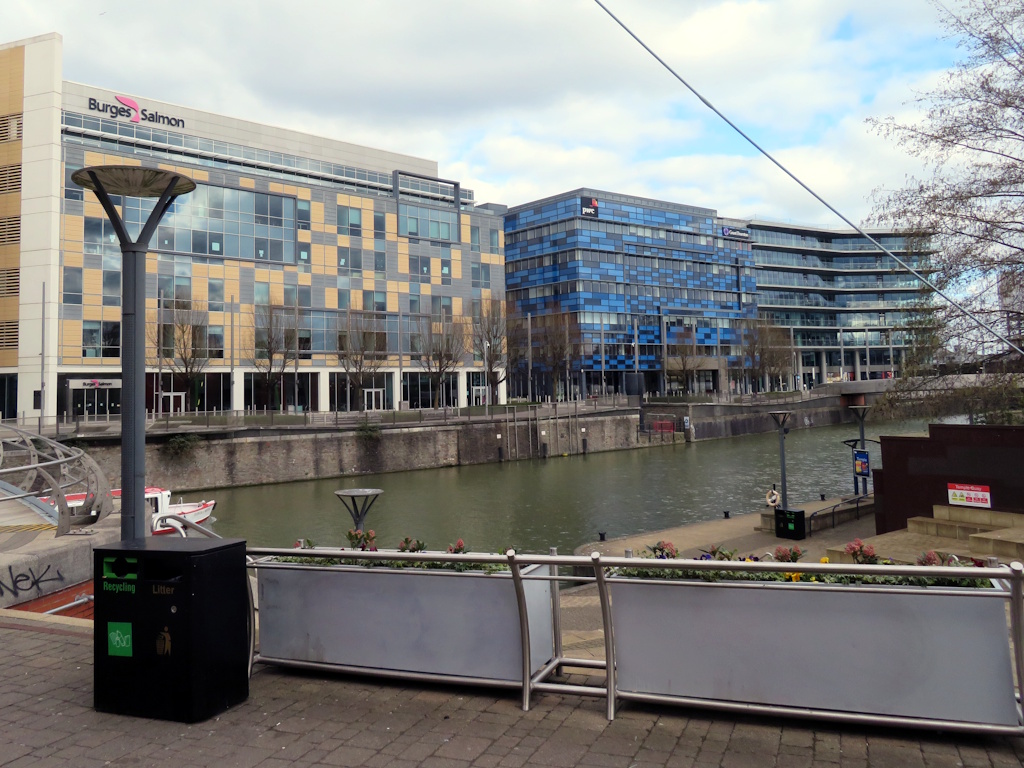
Those lucky high flyers are looking forward to lunchtime, where the new development delivers a fresh Gregg™s, a Starbuck™s and a Wetherspoon™s. Any requisite plans for these outlets will have been through a process requiring approval, and this is what the pen-pushers at City Hall call progress?
It's a short hop to Temple Meads via Brunel's engine shed and only 11 minutes back to Bath. At least it would be if not for the inevitable engineering works on a Sunday, so that Gregg™s came in quite handy, actually.
